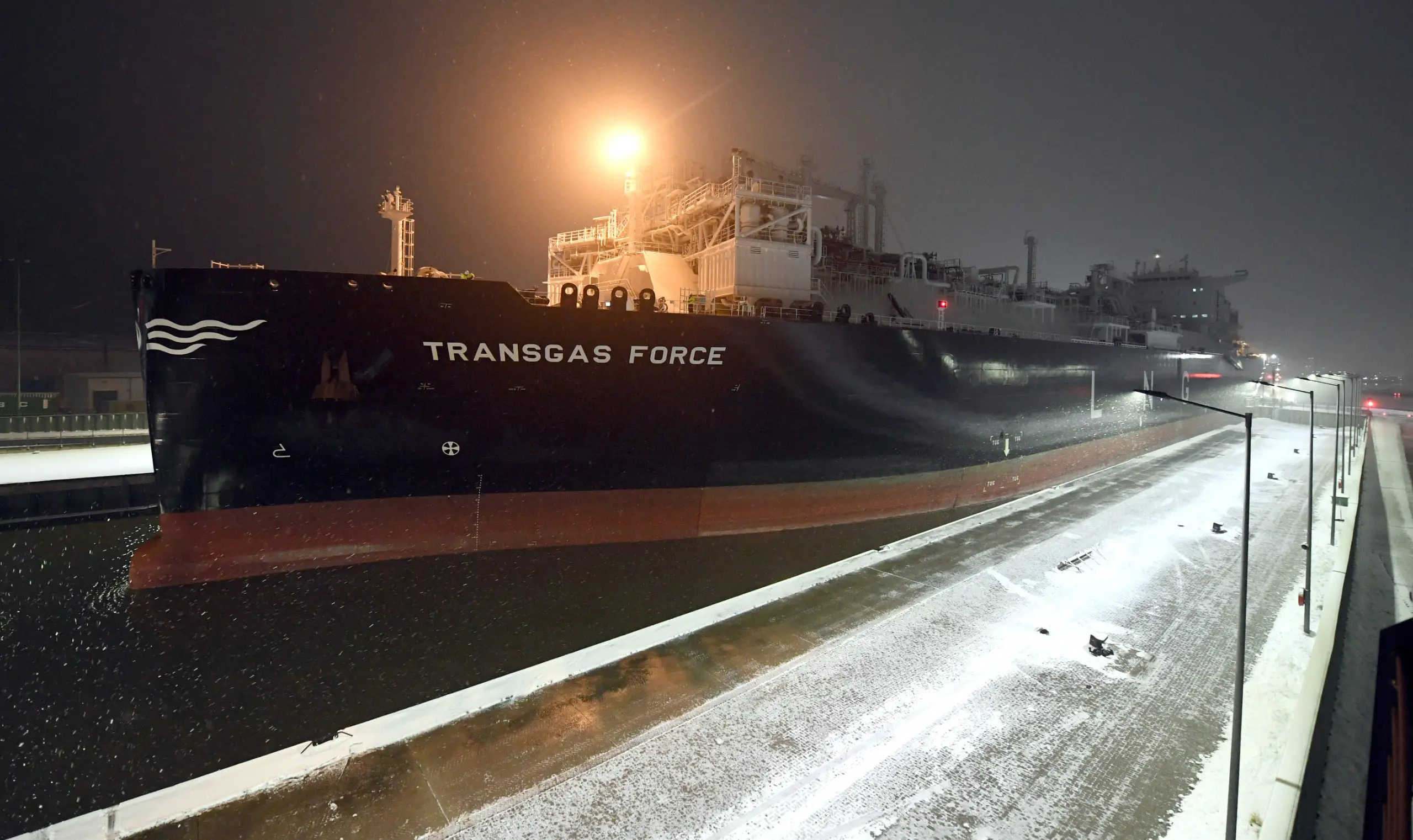The 174,000-cbm FSRU Transgas Force, owned by Dynagas, has left Germany’s Bremerhaven and will now work as an LNG carrier until February when it is expected to be deployed in Stade, according to German LNG terminal operator Deutsche Energy Terminal.
State-owned DET is planning to commission its FSRU-based facilities in Stade and Wilhelmshaven in the first quarter of 2024.
Following the launch of these two facilities, DET will operate in total four FSRU-based LNG terminals as Uniper and RWE already installed Hoegh LNG’s FSRUs Hoegh Esperanza and Hoegh Gannet in Wilhelmshaven and Brunsbüttel.
Also, the German government sub-chartered the FSRU Transgas Power, owned by Dynagas, to private firm Deutsche Regas to serve the planned LNG import terminal in the port of Mukran.
Transgas Force to be deployed in Stade in second half of February
In January this year, work started on the new LNG jetty in Stade which will welcome the 2021-built FSRU Transgas Force.
German port firm Niedersachsen Ports (NPorts) is responsible for planning and implementation of the new jetty.
Also, Dutch gas grid and LNG terminal operator Gasunie is responsible for the pipeline that will connect the FSRU-based LNG terminal in Stade with the grid.
The Stade FSRU-based LNG terminal will have a capacity of some 6 bcm per year.
In July, Stade onshore LNG terminal developer Hanseatic Energy Hub announced the arrival of the FSRU in Germany’s Bremerhaven.
The Lloyd Werft yard in Bremerhaven has been preparing the FSRU for about four months for its upcoming job in Stade.
According to its AIS data, Transgas Power left the yard earlier this week and it is currently located offshore the Dutch port of Rotterdam where the Gate LNG import terminal, owned by Gasunie and Vopak, is located.
“The Transgas Force will be cooled down in Rotterdam and then will be sailing as an LNG carrier until its permanent use as FSRU in Stade,” a spokesman for DET told LNG Prime.
“We are currently assuming that the Transgas Force will be deployed in Stade in the second half of February,” the spokesman said.
In the meantime, DET will also hold short-term capacity auctions on December 11 and 14 for its FSRU-based facility in Stade.
Second Wilhelmshaven terminal
As per the second facility in Wilhelmshaven, Excelerate’s FSRU Excelsior is currently located at the Navantia yard in El Ferrol, Spain for a planned technical stop ahead of the start of its job in Wilhelmshaven, Germany.
In October last year, US FSRU owner Excelerate signed a charter deal with Germany for the 2005-built 138,000-cbm FSRU.
The vessel will serve the second FSRU-based facility in Wilhelmshaven.
DET’s spokesman said that FSRU Excelsior “is scheduled to dock in Wilhelmshaven in the first quarter.”
Belgium-based TES and France’s Engie are DET’s service providers for the Wilhelmshaven 2 terminal and the facility will have a capacity of about 4 bcm per year.
Germany’s transmission system operator OGE recently completed the connection pipeline to the facility, WAL II.
OGE completed the first pipeline, WAL I, for the first FSRU-based terminal in Wilhelmshaven in December last year.
The WAL I and WAL II pipelines will be able to transport 100 terawatt hours (TWh) of gas annually from the end of 2023, according to OGE.
Unlike Hoegh Esperanza which is docked at a jetty, FSRU Excelsior will be moored offshore Wilhelmshaven.
Last year, TES contracted Norway’s ECOnnect Energy to provide the latter’s jettyless IQuay solution for the LNG import terminal.
The solution will connect the FSRU to the onshore terminal, substituting a conventional jetty, and fast-tracking the deployment.

